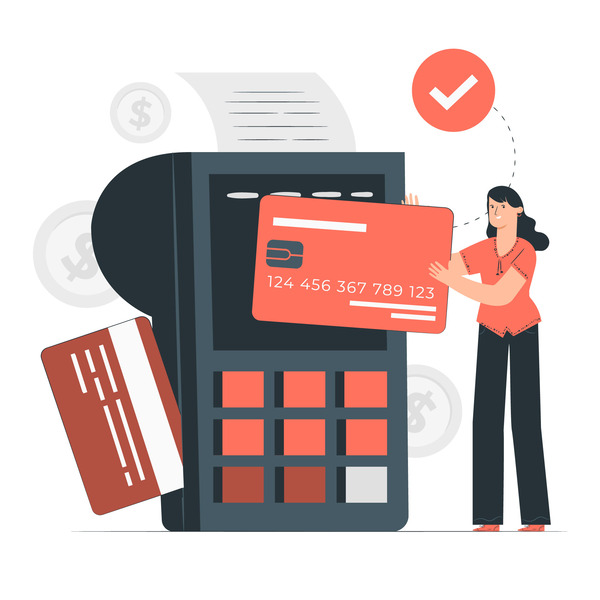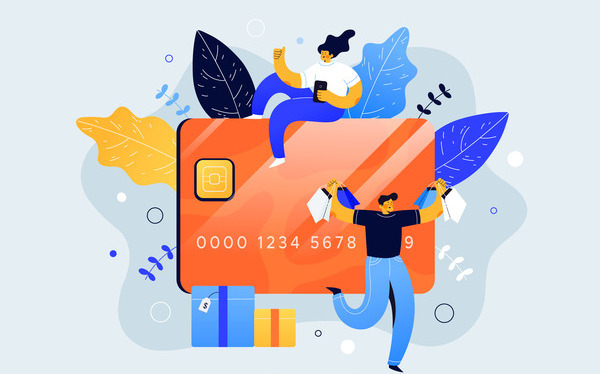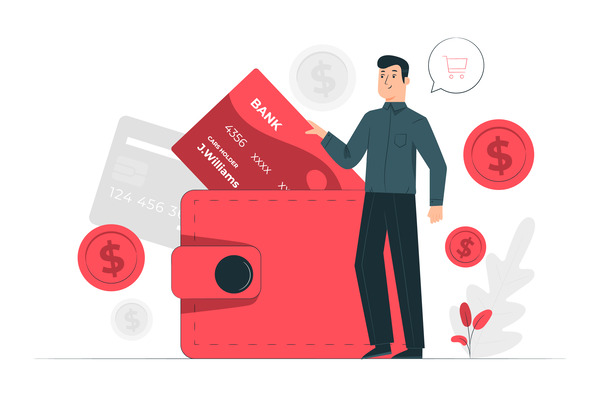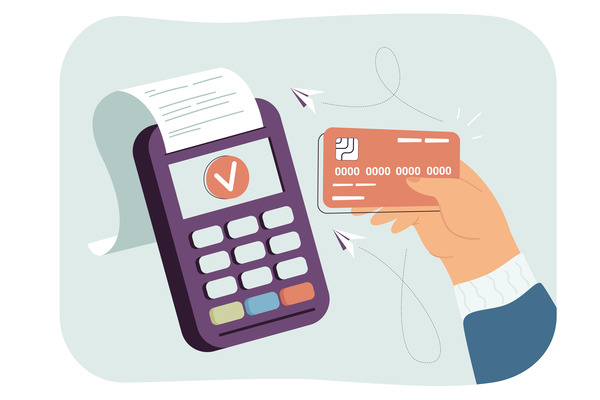
Credit Cards Pros and Cons
Love them or hate them, credit cards are a part of our culture. And as is the case with our culture, you can find very passionate support for the use of credit cards and just as passionate support advocating against credit card use.
My goal in this article is to take an objective look at the pros and cons of credit cards. Let’s look at what makes them so appealing and what makes them equally dangerous.
If you already have a credit card or two, and you are even considering getting another one, I want you to have all the facts.
I want you to know the ins and outs of credit card use. Let’s dive in!
Pros
People that advocate for the use of credit cards always advocate for the WISE use of credit cards. That’s why they preface their discussion with the phrase, “as long as you pay the card amount in FULL, on TIME, EVERY month.”
Proper credit card use requires discipline. When you have that discipline, paying with plastic has some advantages.
a. Convenience
Credit cards are a convenient way to pay for anything from utilities to groceries, to dinner out with friends. Credit cards are easy to carry when compared to a wad of cash and allow for fast payment – just tap or swipe.
In addition, when you are traveling, credit cards will automatically convert purchases into the local currency and unlike debit cards, they typically won’t charge a fee.
Most hotels and rental car companies require a credit card for a security deposit.
Credit cards also make online shopping easier and offer more protection (more on that later).
b. Rewards Programs
The premise here is that you get some of your purchases back through a rewards program. There are three main styles of reward programs.
- Cash Back – You receive a percentage of the money you spend back as a check or credit toward your bill.
- Travel Rewards – Some cards award you frequent flyer miles that you can accumulate for free or discounted flights. In addition, some cards allow you to cash in your miles for gift cards or merchandise.
- Points – Some cards offer you points for your purchases. You can then cash in the points for gift cards or merchandise. The challenge here is not knowing the cash value of the item you are receiving (the card companies don’t always publish that) thus making it difficult to know if you are getting value out of the program.
Credit cards can earn you hundreds of dollars in rewards each year. Let’s look at an average credit card that awards you 1.25 times your purchase. By setting up automatic payments for my utilities, internet, and cell phone, I charge $1000 per month. I am earning 1250 points each month by doing that. That is 15,000 points a year, simply for automating some of my reoccurring payments. Often, you can earn higher points for dining and travel purchases. Remember, you MUST be paying the FULL balance of your credit card on TIME, EVERY month to truly reap the rewards.
Furthermore, many credit cards offer lucrative sign-up bonuses allowing you to rack up rewards quickly.
A word of caution: No matter how good the rewards program is, it is not a good deal if you carry a balance. You may be earning 1% back on your purchases, but paying 18% or more on all your purchases.
For the rewards program to truly be a reward, you MUST pay your credit card balance in FULL, on TIME, EVERY month. If not, you are not reaping the reward, rather you are paying the credit card company interest which far outweighs any reward you, may be earning.

c. Builds Your Credit
While credit cards are an important tool for building your credit, they must be used as that – a tool. Paying your credit card balance in full, on time, every month is a great way to build your credit history and establish a good credit score.
When you have built a good credit score, lenders want to lend you money. A good credit score allows you to qualify for better interest rates on credit cards, auto loans, and home mortgages. Having no credit makes it extremely difficult to qualify for a loan at all.
Credit scores are often used for more than lending decisions. In many states, a good credit score will save you money on auto insurance. Often landlords and potential employers may use your credit score to evaluate your trustworthiness
To sum it up, it never hurts to have a good credit score.
d. Security Features
If someone steals your credit card and goes on a shopping spree, you are not required to pay for those purchases. However, if they steal a wad of cash, well you have lost that money.
The same security feature does apply to debit cards but there is one key difference. When the thief is using your debit card, the money is coming out of your account and you will have to wait for the money to be returned by the bank after you file your report.
In contrast, with a credit card, the thief’s purchases are added to your bill. Since you report the theft immediately, before you receive your bill, you do not have to pay for the purchases you did not make.
Failing to report credit card theft right away, still limits your liability. The most you will have to pay for fraudulent charges made with a credit card is $50. If it is just the credit card number that gets stolen and not the physical card, you do not have to pay a single cent.
Debit cards do offer fraud protection, however, your liability is higher. There are tighter rules. You have TWO business days to report the stolen card or you are responsible for $500 of charges rather than $50. You have 60 days after receiving your statement to dispute any charges otherwise you pay ALL charges.

e. Purchase Protection
Credit cards offer some purchase protection. If you order a product online and never receive it, you can dispute the charges with the issuer of the credit card. This can be time-consuming and should be used only after you have tried to correct the issue with the merchant.
Disputing charges on a debit card is possible just slightly more difficult as the money has already left your bank account and you have to persuade the bank to return the money, a process that may take up to 11 business days.
Some credit cards offer additional perks that protect you if purchases go wrong. Many of these perks are free, They may include:
- Purchase protection on brand-new products. This refunds your money in case of loss, theft, or damage.
- Extended warranties for items such as electronics. Typically free of charge.
- Mobile phone insurance when you pay your mobile phone bill with your credit card. This insurance protects you from theft or damage to your phone.
- Travel insurance, helps cover the cost of emergency travel, medical bills in a foreign country, lost or damaged baggage, and costs if a trip is canceled or delayed.
- Rental car insurance when you book the rental car with a credit card.
f. Expense Tracking
When you receive your credit card statement, you have a record of all your spending. You know where your money went. This information can be used to create a budget or to gauge if you are sticking to your budget.
Sometimes when you use cash, you may not keep track of where it all went and be left to speculate. Of course, you can save receipts and track your cash purchases this way.

Cons
Some of the features that make credit cards so attractive can actually become detrimental if not used appropriately. For example, the convenience of credit cards can make it extremely easy to overspend and before you know it, you could be in over your head in credit card debt.
“Proper credit card use requires discipline. When you have that discipline, paying with plastic has some advantages.” – The question is: Do you have that discipline?
Well, I didn’t.
a. Temptation to Overspend
Let’s face it, credit cards make it easy to spend.
You come across something you REALLY want or my favorite “something” that is on SALE and you just don’t have the funds for it, but if you put it on your credit card you know you can make the monthly payment and in 4 months you will have it paid off.
DON’T don it, don’t start down this slippery slope. Doing so could start you on the journey to accumulating credit card debt and before you know it, you could be drowning in credit card debt.
More than half of credit card users carry a balance and the average balance is $6,500 which equates to about 10% of what the average U.S. household earns. Are you starting to see the danger here? It can be so subtle, so quiet, so sneaky.
It has been shown that paying with plastic feels less real than paying with cash, making it very easy to overspend. There is a psychology behind our money and spending habits.
The key to spending is mindful spending, knowing what each item costs and what the total cost will be will make spending the money more real. When we don’t give it any thought we are more likely to overspend.
b. Interest Charges
When you carry a credit card balance, you have to pay interest. This is the cost of using the credit card issuer’s money. The interest rates for credit cards in the United States in 15%-25%. Yikes!
Suppose you are a typical credit card user in the United States and have a balance of $6500 with an 18% interest rate. If you just make the minimum payment each month, around 2%-3%, it will take you over 30 YEARS to pay it off.
You will be paying around $16,000 in interest over that period of time.
You can see why carrying a balance can be overwhelming. This scenario assumes you never add any new purchases. If you continue to purchase, the balance may never get lower and the stress and shame can snowball into a drowning situation – you don’t even know where to start tackling this problem.
You can see how adding even $50 extra dollars to your minimum monthly payment can have a hugely positive effect on knocking down your debt.
Luckily, most credit card users pay more than the minimum amount. Using the same example from above, if you paid $400 per month toward the balance of $6500, you would have the whole amount paid off in TWO years and pay just over $1000 in interest.
The best way is to avoid interest payments altogether by paying the balance of your credit card in FULL, on TIME, EVERY month.
There are several ways to achieve this goal. I like to set up automatic payments, the more I can automate my financial life the less stress I have. Some people set a reminder such as an event on their calendar or an alarm on their phone a few days before the payment is due. Determine which method fits your financial style and implement it.

c. Fees
Interest payments aren’t the only cost of business charges from credit cards. Credit cards often hit you with a variety of fees. These fees may include:
- Annual fees – Some credit cards charge their users an annual fee to have the card. This is fairly common with cards that offer a generous reward program. Users accept the annual fee because the benefits of the reward program outweigh the annual fee.
- Balance Transfer fees – Transferring a balance from one card to another can make sense if it is saving you money in interest. However, keep in mind there will be a fee associated with the transfer and that fee typically runs between 3% and 5%. Again, this fee can be justified if it is saving you more than 3% to 5% in interest (which I am sure it is otherwise why would you do it?).
- Cash Advance fees – If you want to draw cash from your credit card, you can, for a cost. This fee can range from 3% to 5% and generally comes with a higher interest rate and NO grace period, meaning you will owe interest BEFORE you get your monthly statement.
- Foreign Transaction fees – Some cards will charge you a fee if you use your card in a foreign country. This fee can run around 3% of the purchase. However, some cards do NOT charge a foreign transaction fee, making them desirable to frequent travelers.
- Late payment fees – Even being ONE day late with your payment your account will receive a $30 or more late payment fee. If you are late again within a six-month period, that fee will increase to $40, $50, or more. However, if you have been a loyal customer for an extended period of time and have made your payments on time if you are late one time – reach out to customer service and plea your case. Tell them you missed it but you never have before and ask them to waive the late fee. Quite often they will. Of course, the caveat here is that you have a track record of paying your minimum amount or more on time, every month.
- Over-limit fees – If you go over your approved credit card limit, the cardholder usually rejects your purchase. However, some cards allow you to opt-in to allow over-limit purchases to be processed and assess you an over-limit fee of $35 or more per TRANSACTION.
d. Fine Print
In the majority of cases it is possible to avoid most of the fees by choosing your card carefully and wisely. And by … are you ready for it … paying your balance in full, on time, every month.
However, be aware that credit card issuers can be sneaky and tempt you. Often you will receive “convenience checks” that you can use like a personal check and that amount will be charged to your credit card.
What they often neglect to tell you is that payments made with these checks are treated like cash advances. Therefore, they incur a higher interest rate and no grace period.
Balance transfers are another example.
You may receive offers with a temptingly low-interest rate that encourages you to transfer a balance from another card. Make sure you read the WHOLE offer.
You need to know the fee that is charged for this service AND you need to know how long the temptingly good rate is in effect (it may be an introductory rate that is only good for a set number of months).
Read every bit of the credit card application. I know banks do not make it easy, they write in tiny font and use technical jargon to deter and intimidate us.
Make use of professional credit card reviews before applying for a card. These reviews sum up the pros and cons of each card in plain language and include interest rates, fees, and rewards.

e. Potential Harm to Your Credit Score
Credit cards are a way to build your credit but you must use them wisely. I know I sound like a broken record, but I can not stress that enough. If you run up a huge balance and only pay the minimum or MISS a payment (way worse), you will HARM your credit score.
Here are the most common ways a credit card can do damage.
- Late payments – This is a HUGE red flag for lenders. It dings your credit score EVERY time you fail to pay your bill on time, even more, if you are 30 days late (one full billing cycle).
- High credit utilization – This is using too much of your available credit. Lenders interpret this as you are over-extending yourself. The target here is to use no more than 30% of your available credit. For example, if your credit limit is $10,000, aim to use no more than $3,000.
- Applying for too many cards – Fight the temptation to open lots of cards so you will have lots of available credit. Lenders may interpret this as you being desperate for cash.
Conclusion
The bottom line is that YOU have to decide if a credit card is right for YOU.
Ask yourself these questions:
- Am I able to treat a credit card like cash?
- Am I disciplined enough to pay the balance in full, on time, every month?
- Why am I getting a credit card? Is it for the pros listed above? Or is it to increase your purchasing power (this can lead you down a slippery slope)?
- Am I making a fully informed decision?
If you are able to pay the credit card balance in FULL, on TIME, EVERY month (yes, I said it one more time) then a credit card can be a useful tool in your financial toolbox.








